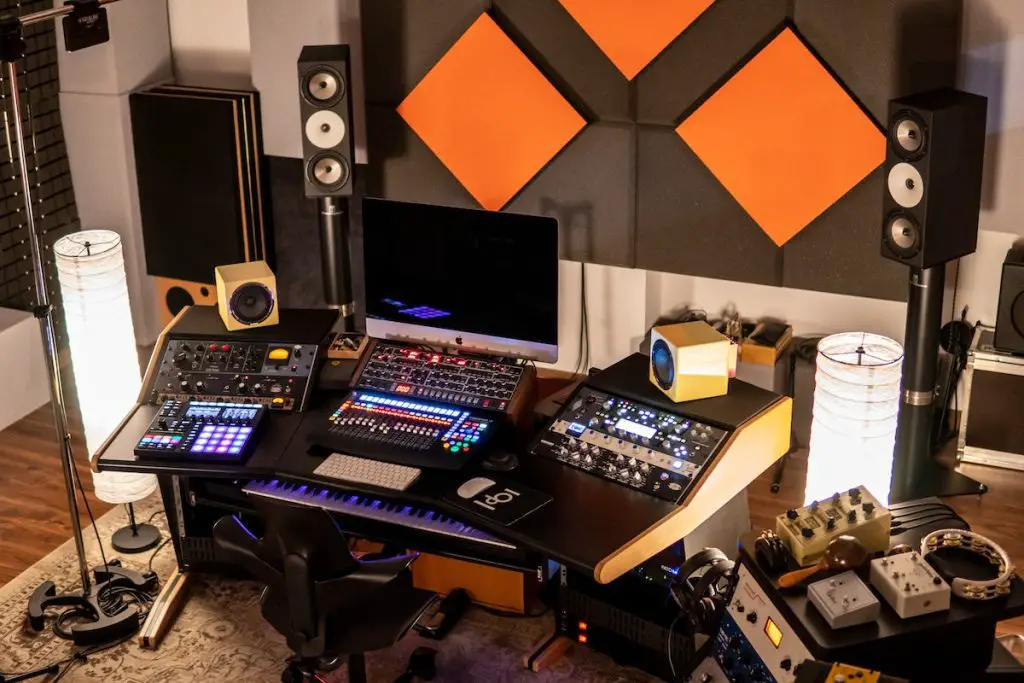Have you ever found yourself listening to music or podcasts that sound like they’re being transmitted through a tin can? If you’ve ever experienced audio that sounds muffled, distorted, or just plain bad, chances are that it’s related to the bandwidth of the audio system.
In this blog post, we’re going to dive deep into the world of audio bandwidth. We’ll cover everything from what bandwidth means and how it’s measured to why it’s so important for high-quality sound. So get ready to take your audio production to the next level, and let’s get started!
What is bandwidth in audio? Bandwidth in audio refers to the range of frequencies that a particular audio system or device can handle. It is an important factor in determining the overall sound quality of audio playback or recording. Improving audio bandwidth can lead to better audio quality and a more immersive audio experience.
What does bandwidth in audio mean?
In audio, bandwidth refers to the range of frequencies that an audio system can accurately reproduce. The human ear can typically hear frequencies between 20 Hz and 20 kHz, and the bandwidth of most audio systems extends within this range.

The frequency range of audio is typically divided into several bands, including sub-bass (20-60 Hz), bass (60-250 Hz), midrange (250 Hz-2 kHz), upper midrange (2-4 kHz), presence (4-6 kHz), and brilliance (6-20 kHz).
The bandwidth of an audio system is determined by a combination of factors, including the frequency response of the speakers or headphones, the amplifier’s frequency response, and the quality of the audio source material. A well-designed audio system will have a flat and accurate frequency response across the entire frequency range, resulting in a balanced and natural-sounding playback.
AKAI Professional MPK Mini MK3

AKAI Professional MPK Mini MK3
What’s the importance of bandwidth in audio production?
The bandwidth of audio systems plays a critical role in every stage of audio production and playback, from recording and mixing to mastering, playback, compression, and effects processing. Here are some of the main uses of bandwidth:
1. Recording and mixing
When recording and mixing audio, it is important to capture and reproduce the full frequency range of the source material. This requires a recording and mixing system with a wide bandwidth, capable of accurately capturing and reproducing the high and low-frequency content of the source material.
A playback system with a wide bandwidth and accurate frequency response can reproduce the full frequency range of the audio and provide a more immersive and detailed listening experience.
2. Mastering
During the mastering process, the frequency balance of the audio is adjusted to optimize the overall sound quality and ensure that the audio translates well across different playback systems. This requires a mastering system with wide bandwidth and precise frequency response to accurately reproduce and adjust the frequency balance of the audio.
3. Playback
During audio playback, the bandwidth of the playback system determines which frequencies will be accurately reproduced and which frequencies will be lost or distorted. A playback system with a wide bandwidth and accurate frequency response can reproduce the full frequency range of the audio and provide a more immersive and detailed listening experience.
4. Compression and encoding
When compressing or encoding audio for streaming or storage, the bandwidth of the audio is reduced to reduce file size and improve transmission or storage efficiency. This requires careful consideration of which frequencies to preserve and which frequencies to discard in order to maintain the overall quality and balance of the audio.
5. Effects processing
Many audio effects, such as equalization, distortion, and filtering, are based on manipulating the frequency content of the audio. A wide bandwidth and accurate frequency response are essential for achieving precise and natural-sounding effects processing.
How does bandwidth affect music playback?
The bandwidth of a playback system can have a significant effect on music playback, as it determines which frequencies will be reproduced accurately and which frequencies will be attenuated or distorted.
If the playback system has a limited bandwidth, it may not be able to reproduce the full range of frequencies present in the music. This can result in a loss of detail and clarity, particularly in the high and low frequencies. For example, if the playback system is not capable of reproducing frequencies below 50 Hz, then the low-frequency content of the music may be lost, resulting in a thin or weak-sounding playback.
On the other hand, if the playback system has an overly wide bandwidth, it may reproduce frequencies that were not present in the original recording, resulting in a distorted or unnatural sound. For example, if the playback system is capable of reproducing frequencies up to 40 kHz, but the original recording only contains frequencies up to 20 kHz, then the extra high-frequency content may be reproduced as noise or distortion.

What are some techniques to improve bandwidth in audio?
There are several techniques that can be used to improve the bandwidth in audio:
1. Upgrade your playback system
If your current playback system is limited in its bandwidth, upgrading to a system with a wider frequency range can improve the accuracy and detail of the audio playback.
2. Use high-quality cables
The quality of the cables used to connect your playback system can affect the bandwidth and overall sound quality. Using high-quality cables with low resistance and high shielding can reduce signal loss and interference, resulting in improved audio quality.
3. Adjust the equalization
The equalization (EQ) settings of your playback system can be adjusted to optimize the frequency response and improve the overall bandwidth. By boosting or cutting certain frequencies, you can compensate for any deficiencies in your playback system and achieve a more balanced and accurate sound.
4. Use high-resolution audio files
Higher-resolution audio files contain more detail and frequency content than lower-resolution files, resulting in improved bandwidth and overall sound quality. Using high-resolution audio files can bring out more detail and nuance in the music and result in a more immersive listening experience.
5. Room treatment
The acoustic properties of the room in which you are listening can affect the perceived sound quality and bandwidth. Adding acoustic treatments such as absorptive panels, bass traps, and diffusers can improve the acoustic environment and result in a more accurate and detailed sound.
If you want even more tips and insights, watch this video called “Understanding Bandwidth” from the Keysight Labs YouTube channel.
Conclusion
Well, folks, we’ve come to the end of our journey through the world of audio bandwidth. I hope you’ve learned a thing or two about what bandwidth is, how it affects sound quality, and techniques to improve it. But before we part ways, I have to ask, did I cover everything you wanted to know? If not, drop a comment below and let me know. I read and reply to every comment.
I hope this article has been helpful in improving your audio experience. If you found it informative, please share it with a friend and check out my blog for more tips and tricks on all things audio. Thanks for tuning in, folks. Until next time, keep jammin’ to that high-quality sound.
Key takeaways
This article covered what bandwidth is. Here are some key takeaways:
- Bandwidth in audio refers to the range of frequencies that a particular audio system or device can handle.
- It is an important factor in determining the overall sound quality of audio playback or recording.
- Techniques to improve audio bandwidth include using higher-quality audio equipment, optimizing audio file formats, and adjusting audio settings to reduce compression.
- Improving audio bandwidth can lead to better audio quality and a more immersive audio experience.
- Audio file formats can affect bandwidth, so it’s important to choose the right format for your needs.
















If excessive bandwidth can result in the production of “distortion or unnatural sound”, why would we EVER want a bandwidth in excess of 44.1 kHz since those frequencies are not human-ear-audible and may result in “distortion or unnatural sound” ?